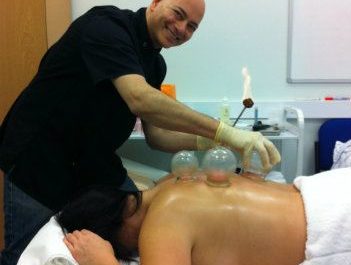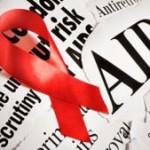What Is The Cupping Technique?
The question on all of our minds is, what are those red circles on the backs and shoulders of most Olympic athletes? The markings are ominous in part because they represent mystery, similar to that of crop circles, and the lethal kiss of the suckers on an octopus’ tentacles.
It’s not just Michael Phelps who is donning large purple rings that rival those of the Olympic logo, either. US  swimmer Natalie Coughlin posted a picture of cups suctioned to her chest with the caption “Laughing because it hurts so bad”, while Belarusian swimmer, Pavel Sankovich, also posted a photo of his legs being “cupped”.
swimmer Natalie Coughlin posted a picture of cups suctioned to her chest with the caption “Laughing because it hurts so bad”, while Belarusian swimmer, Pavel Sankovich, also posted a photo of his legs being “cupped”.
Athletes love it for the way it makes them feel physically and mentally. However, the art of cupping isn’t reserved for just the elite athletes. It’s a practice that goes far back and has been used to stave off more than just a post-swim charlie horse.
Cupping: An Ancient Chinese Tradition
The tradition originated in China some 3,000 years ago, before spreading to Egypt, the Middle East and beyond. The original cups were made of bamboo but created the same effect. In Mandarin, the practice is called “huo guan”, or fire cupping.
The cup creates suction underneath and that vacuum action lifts the skin up, along with all the soft tissue below the surface. The area gets an infusion of fluid and the patient gets increased blood flow to the area. The technique has one downside of leaving some alien marks on the skin. Sometimes the cupping breaks up some of the capillaries on the surface of the skin, which is why you see the discoloration.
What Does It Treat?
The British Cupping Society says cupping therapy can treat a variety of conditions but they haven’t exactly been backed by evidence. Olympians and their trainers use this ancient technique to increase blood flow for performance and recovery. But that’s not all. It’s said to cure other ailments as:
- Anemia
- Hemophilia
- Arthritis
- Fibromyalgia
- Fertility (and other gynecological disorders)
- Eczema
- Acne
- High blood pressure
- Migraine headaches
- Anxiety
- Depression
- Bronchial congestion
- Allergies and asthma
- Varicose veins
Celebrities Using The Technique
The list of A-list cuppers is actually surprisingly long. In 2004, Gwyneth Paltrow semi-famously appeared at a film premiere revealing the signs of cupping on her back. This was when we first took notice of the practice as a potential trend. Since then, Justin Bieber, Victoria Beckham, and Jennifer Aniston have all jumped on board according to their polka-dotted exteriors. Nicole Richie even made her dad, Lionel Richie, try it.
Today, you can find cupping services in all kinds of popular spas and wellness centers. If you’re looking for something more authentic, we recommend seeking out a practitioner of the original cupping method. Hint: you’ll know it’s authentic if they use bamboo cups.
Are There Risks To Look Out For?
To avoid the rare occasion when the patient gets burned by the cups, organizations like the British Cupping Society have their own rules of practice for cupping. Mostly, though, doctors ask that patients seek out a certified and thoroughly trained practitioner. There is a big difference between traditional Chinese cupping and the technique that is currently being used in Western medicine.
If you are looking into trying this method, expect to feel some tightness, pressure and warmth as the cup grips to the surface of the skin and pulls it gently toward the center of the cup. The heat sensation will remain for about 10 minutes following the cup removal. The skin will look inflamed as if it was scorched by the sun. Those who have this done say it is absolutely worth it.







